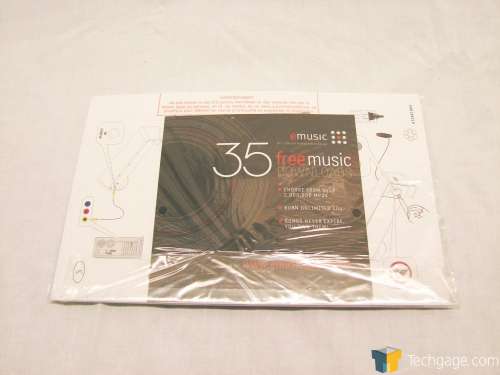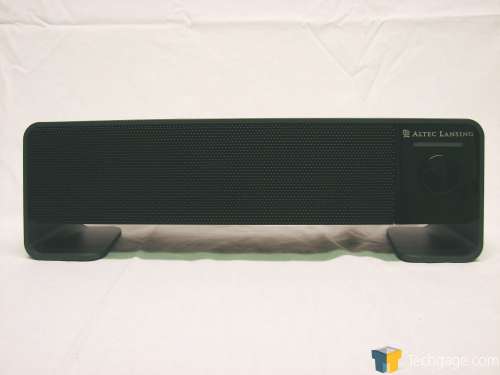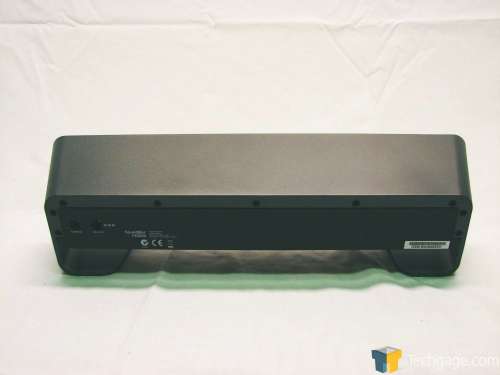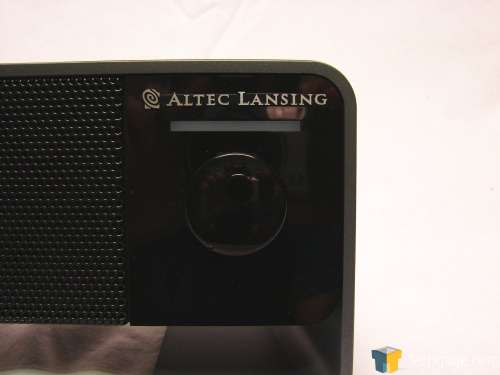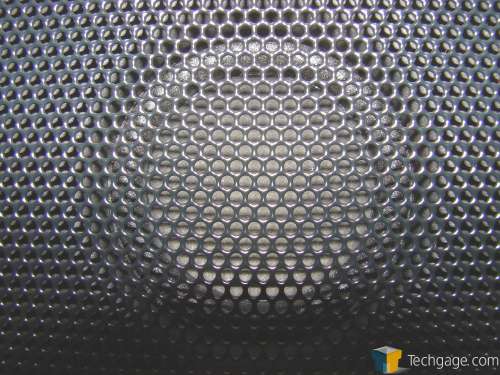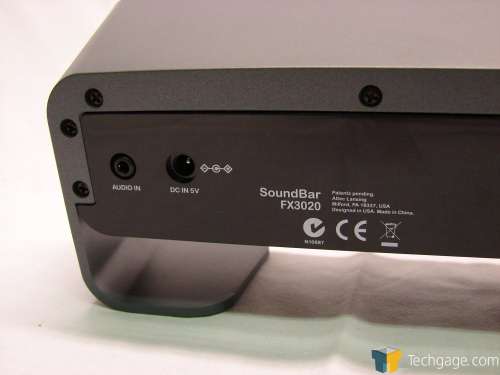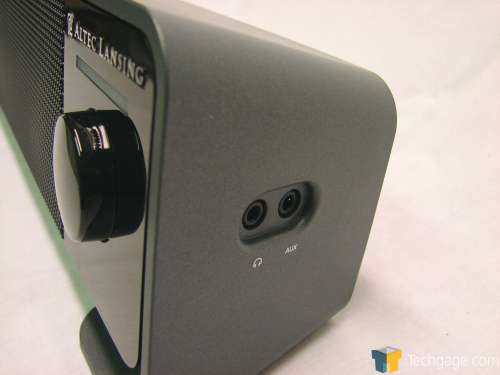- Qualcomm Launches Snapdragon 4 Gen 2 Mobile Platform
- AMD Launches Ryzen PRO 7000 Series Mobile & Desktop Platform
- Intel Launches Sleek Single-Slot Arc Pro A60 Workstation Graphics Card
- NVIDIA Announces Latest Ada Lovelace Additions: GeForce RTX 4060 Ti & RTX 4060
- Maxon Redshift With AMD Radeon GPU Rendering Support Now Available
Altec Lansing FX3020 SoundBar
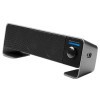
Altec Lansing grabbed some attention at the 2007 CES with their PT7031 and PT8051 ‘Powered Theater’ speakers, which created a virtual surround sound field around the listener. Their new FX3020 SoundBar features a similar concept – but does it deliver?
Page 2 – Closer Look
The contents of the package are protected by a cellulose-fiber shell, which is biodegradable. The SoundBar hardware bundle includes a six-foot audio input cable, a shorter 6″ cable for connecting a portable music player to the speaker’s auxiliary input, and an AC adapter that delivers 5VDC to the SoundBar.
The FX3020 SoundBar includes pictorial documentation that’s easy to read and understand. The package also includes a voucher for 35 free tracks from eMusic – that’s three complete albums.
The FX3020 SoundBar is a low-slung design that’s only four inches tall. It rests about an inch off the desk surface, to allow it to accommodate the base of a flat-panel monitor. It’s attractively styled, and its aesthetic design makes use of a variety of materials and textures, from the matte-finish dark-gray outer shell, to the glossy black plastic around the controls, to the perforated metal grille. The bar beneath the Altec Lansing logo glows blue when the unit is powered on.
The control scheme is as simple as it gets – simply turn the knob clockwise to turn the unit on and increase the volume, and turn the knob completely counterclockwise until it clicks to turn the unit off. Momentarily pressing the volume knob straight in puts the unit in ‘mute’ mode. In that state, the power indicator flashes every few seconds.
The SoundBar contains two active 2″ drive units at either end of the speaker, and a third “pressure driver” diaphragm centered between the two. The pressure driver, better known as a passive radiator, replaces the traditional bass-reflex port in small enclosures, and offers better flexibility in tuning the system to a lower frequency. When playing bass-heavy passages at high volumes, the pressure driver’s diaphragm goes crazy, since its function is to absorb the acoustic load at low frequencies and augment the bass output. Each driver has a concave diaphragm, mainly for looks.
The FX3020 SoundBar uses two DSP algorithms to enhance its sound output. The SFX (Sound Field Expander) algorithm modifies the ‘phase’ of the acoustic signals being sent to each driver, and the combination of phase relationships produces the psychoacoustic effect of a wider ‘soundstage’ – the perceived ‘space’ in which sounds originate.
The XdB bass enhancement algorithm works based on the harmonic structure of a bass tone, and the human ear’s ability to ‘fill in’ a missing fundamental frequency if all of its harmonics are present. Because these harmonics occur at higher frequencies, they are easier for small speakers to reproduce.
XdB takes fundamental tones and adds harmonics, causing additional perceived richness and fullness in the bass range. This can’t be done with complete impunity, however – the additional harmonics can easily be interpreted as unwanted distortion, and can sometimes seem to muddy the sound.
The SoundBar has two audio input jacks. The main jack is located on the rear of the unit, and is intended for the primary connection to the PC. The DC power input is also located on the rear. On the side of the SoundBar, an auxiliary input jack and a headphone jack are provided. The FX3020 can accept simultaneous inputs on the main and aux input jacks.
Now that we’ve given the FX3020 a proper features once-over, let’s move on to some testing.
|
|
Support our efforts! With ad revenue at an all-time low for written websites, we're relying more than ever on reader support to help us continue putting so much effort into this type of content. You can support us by becoming a Patron, or by using our Amazon shopping affiliate links listed through our articles. Thanks for your support!




